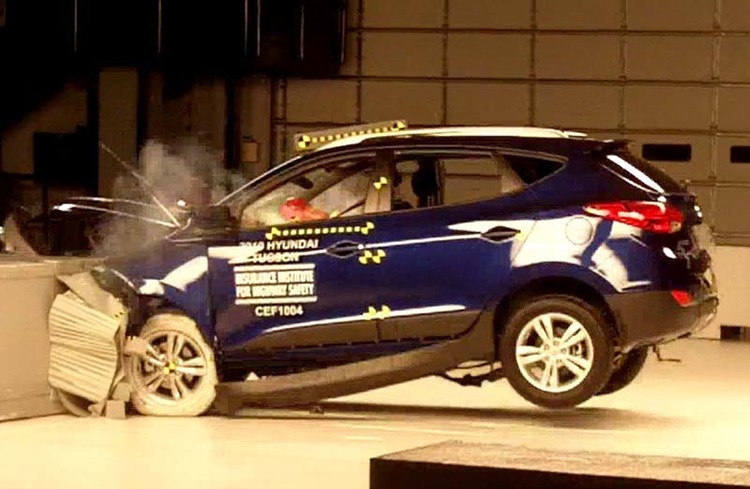It's gonna crash!
 In a crash test, a
1
.
5
metric ton vehicle collides a brick wall. The initial velocity of the vehicle is
v
i
=
−
1
0
m/s
while its final velocity is
v
f
=
2
.
6
m/s
. If the collision lasts for
0
.
2
seconds, what is the average force (in Newtons) exerted on the vehicle due to the collision?
In a crash test, a
1
.
5
metric ton vehicle collides a brick wall. The initial velocity of the vehicle is
v
i
=
−
1
0
m/s
while its final velocity is
v
f
=
2
.
6
m/s
. If the collision lasts for
0
.
2
seconds, what is the average force (in Newtons) exerted on the vehicle due to the collision?
Image credit: Wikipedia Brady Holt
The answer is 94500.
This section requires Javascript.
You are seeing this because something didn't load right. We suggest you, (a) try
refreshing the page, (b) enabling javascript if it is disabled on your browser and,
finally, (c)
loading the
non-javascript version of this page
. We're sorry about the hassle.
4 solutions
👍👌 it was very nice question…
For those who live in countries that uses the short ton, 1 ton is only equivalent to 907 kg. This will throw off the answer since the question is written using long ton which has a 1 ton to 1016 kg ratio .
I thought 1 metric ton was 1000000 kg
Log in to reply
Hee...heee... .
It's bad luck. Never mind, you knew how to solve this problem didn't you?
Due to the impulse theorem △ p = m ⋅ △ v = F m ⋅ △ t Hence F m = △ t m ⋅ △ v = 0 . 2 s ( 1 . 5 ⋅ 1 0 3 k g ) ( 2 . 6 m / s − ( − 1 0 m / s ) ) = 9 4 5 0 0 N
v = 2.6 m/s ; u = -10 m/s ; t = 0.2 s
Since v = u + at ; a = 63 m/s2
F = ma = (1.5x1000)kg x 63 m/s2 = 94500 N
we can easily compute acceleration further calculate the force exerted by the vehicle ..........
We know that F = m a .
m = 1 . 5 ton = 1 5 0 0 kg.
a = △ t △ v .
As the velocity changed from − 1 0 m / s to 2 . 6 m / s ,
the value of △ v = 1 2 . 6 .
And △ t = 0 . 2 as given,
So we get F = m △ t △ v = 0 . 2 1 5 0 0 × 1 2 . 6 = 1 5 0 0 × 1 2 . 6 × 5 = 9 4 5 0 0 N